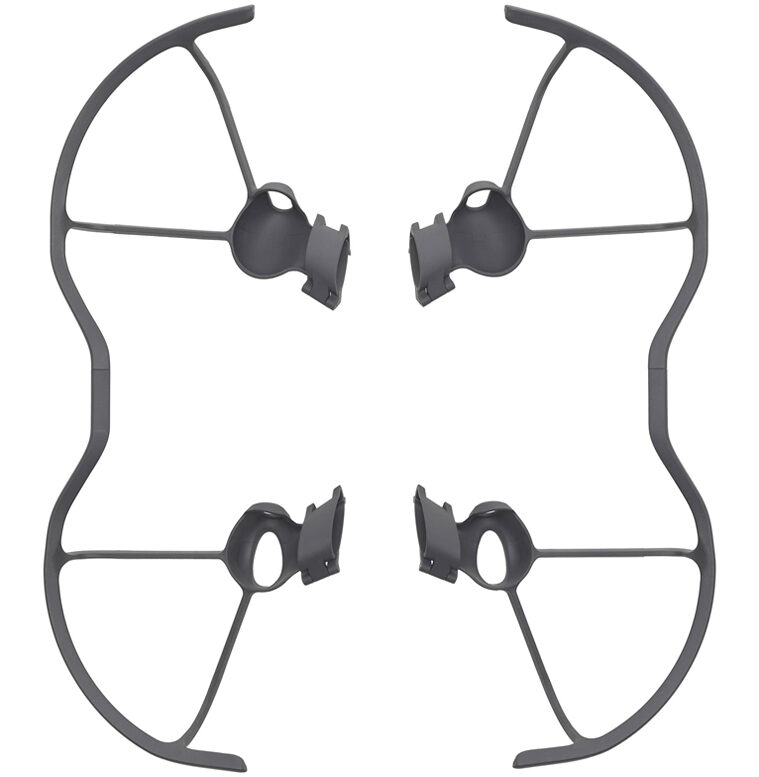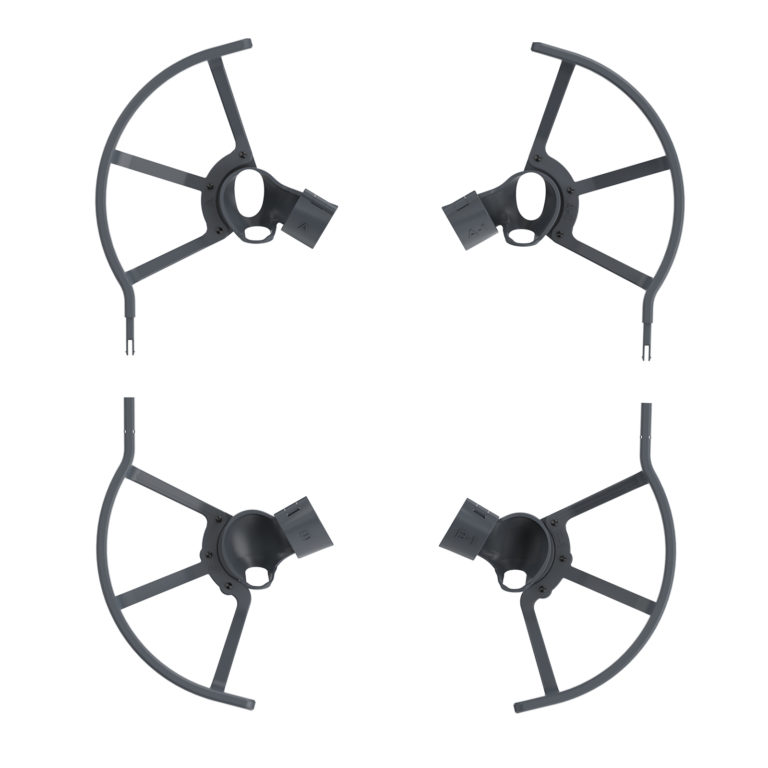

The position of the circle is controlled by tilting the motion controller up, down, right, and left, making maneuvering the drone almost as easy as point and click. A white circle is overlaid onto the camera view and, when the throttle trigger is squeezed, the drone flies in that direction. This is the most intuitive way to fly a drone, and it works beautifully with a head-mounted display. The DJI Avata comes standard with the Motion Controller. The Avata’s Goggles 2 also has diopter adjustments to maximize comfort and sharpness for your eyes.

DJI FPV PROPELLER GUARDS 1080P
The latest headset has the advantage of being lighter and having a brighter, sharper 1080p display, while the Goggles V2’s resolution is 720p. The older Goggles V2 costs a little more and features four antennas, potentially giving you more flight range and handling interference better than the newer design of the Goggles 2 with two antennas. The DJI headset with a ‘V’ in the name is the older model, but in some ways, it’s better. The Avata is available to order with either headset, so shop carefully. There’s only a one-letter difference in the name. The name is somewhat confusing, since the headset that ships with the DJI FPV is called Goggles V2. DJI Goggles 2 vs Goggles V2ĭJI’s newest headset, Goggles 2, is designed specifically for the DJI Avata. Since each is over 250 grams, you’ll need to register these drones before flying them. The DJI Avata at 410 grams (0.9 pounds) is much lighter than the FPV drone’s 795 grams (1.75 pounds). Even a person with small fingers will find it challenging to take a card out with one hand and there’s a danger of dropping the card, which could be heartbreaking if it was lost after capturing some amazing shots with the Avata. The MicroSD card slot is placed behind a cover on the body, but access is very tight since you have to reach between the propeller blades. The compact size of the DJI Avata causes a minor annoyance, however.


With the FPV drone, the propellers should be removed before you stow it away to prevent bending or breaking the blades. The DJI Avata is small enough to fit in almost any case or bag, and the propeller guards protect the blades when you’re traveling. At 7-by-7-by-3 inches, the Avata can fit through spaces that would be impossible for the DJI FPV, which is 12-by-10-by-5 inches. The DJI Avata is tiny - even smaller than an unfolded DJI Mini 3 Pro. The video ends with a crash, but the Avata was unharmed, since the propeller guards and frame protect the more delicate parts. Here’s a short YouTube video from the channel Avata Time demonstrating how easy it is for you to maneuver the DJI Avata after only a few test flights. While the Avata doesn’t stand a chance in a straight-ahead, full-throttle race, its smaller size and maneuverability might give the DJI FPV a challenge in an obstacle course.
DJI FPV PROPELLER GUARDS FULL
Crossing a room takes a fraction of a second at full throttle. Both drones can accelerate at an incredible rate, so caution must be used when squeezing the trigger to move, particularly if you’re flying indoors.
DJI FPV PROPELLER GUARDS MANUAL
The Avata is very fast but can’t keep up with its bigger sibling, reaching 18mph in normal, 31mph in sport, and 60mph in manual mode. The FPV can reach speeds of 34mph in normal mode, 60mph in sport, and a startlingly fast 87mph in manual mode. The Avata’s 5-bladed propellers span three inches, and the motors are smaller as well. The DJI FPV is a larger and more powerful drone, with strong motors and five-inch propellers with thre blades. When it comes to speed, the DJI FPV would easily win a drag race against the Avata. For those shopping for a first-person perspective drone and intrigued by DJI’s goggles and unique controller, the challenge is picking between the DJI Avata and FPV drone, both of which are super-fast, yet easy to fly - even for a beginner. If you already own a DJI FPV, you might be wondering what’s new with the Avata and whether it’s worth getting the smaller drone.


 0 kommentar(er)
0 kommentar(er)
